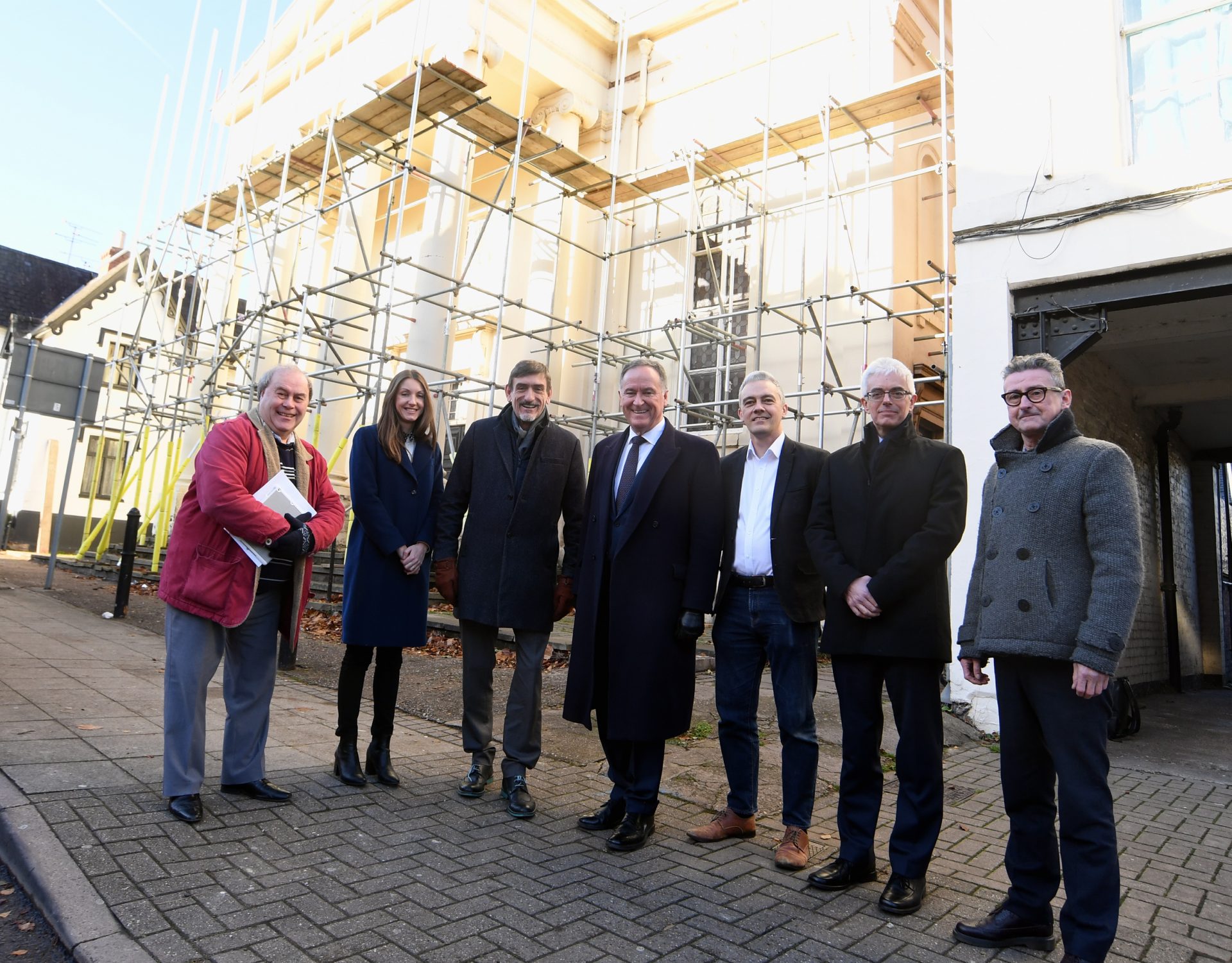
Image: From the left, John Cooke (Warwick District Council), Katie Burn (CDP), Ian Harrabin (CDP), Cllr Andrew Day, Mark Brightburn, Philip Clarke, and Martin O’Neill (all from Warwick District Council).
Work has begun on the first project in the regeneration programme to turn Leamington’s Old Town into a magnet for creative industries, building on the town’s growing Silicon Spa reputation.
Regeneration specialists Complex Development Projects (CDP) has started work on the restoration of the Grade II listed United Reformed Church which will be converted to provide modern office space for creative/digital businesses. The character of the main chapel will be retained with a triple height central atrium, with the crypts transformed into break-out spaces and office pods.
Two further buildings facing Spencer Yard are also part of the project. The adjoining former nursery will be refurbished with a ground floor extension at the rear of its premises to provide more usable flexible office space with a rooftop terrace overlooking the church. A top floor extension will be added to the Dole Office which will provide space for smaller businesses.
The works are being undertaken as part of a funding package with a grant from the Future High Streets Fund as part of the Government’s plan to renew and reshape town centres – making them a more attractive place to live, work and visit.
CDP is Warwick District Council’s Regeneration Partner in the overall 10-year Creative Quarter Initiative and is working up several projects with the Council to galvanise creative activity in Old Town.
Sustainability is key to the project with Spencer Yard set to become more pedestrian friendly with less car parking and there will be more landscaping, lighting and a covered cycle storage area while air source heat pumps and solar panels are also being added to the buildings.
Minister for Levelling Up, the Union and Constitution, Neil O’Brien MP said: “It’s fantastic that restoration work is beginning to transform historic Spencer Yard.
“Leamington is already a thriving hub for creative and digital industries and this project will draw more companies and investment into the town.
“We are investing in impressive local projects like this which provide opportunity, boost local economies, and help communities build back better as we level up the nation.”
Cllr Andrew Day, the Leader of Warwick District Council, said: “This is a watershed moment, and we are excited at the prospect of seeing the long-awaited transformation of an underutilised area into a vibrant and innovative hub for our creative and digital industries. However, this is just the start of an ambitious Creative Quarter vision which will bring our town the massive boost and far-reaching recognition it deserves!”
Katie Burn, Senior Development Executive at CDP, said Spencer Yard was already a creative area with current occupiers including Heartbreak Productions, Motionhouse and the Loft Theatre.
“Our consultation showed there was a shortage of space for the digital creative sector to expand or locate within the town and it’s a key industry in Leamington with ten per cent of the UK’s gaming sector working in the area,” she said.
“It is great to be finally starting construction work after many months of preparation. The initial works to the chapel will provide a new roof and will take place under a temporary roof to protect the fine interiors during the winter months.
“Demand is strong from occupiers and we are already talking to businesses that will bring jobs to the town and boost the local economy.”
Read more on the Creative Quarter here.
What is the Future High Streets Fund?
The Future High Streets Fund aims to renew and reshape town centres and high streets in a way that improves experience, drives growth and ensures future sustainability.
In total, 72 places will share up to £831 million from the Future High Streets Fund to help them recover from the pandemic by improving transport links, building new homes and transforming underused spaces.





